Disasters associated with natural hazards are constantly in the headlines. Some involve predictable human-made factors, such as the catastrophic floods in Derna, Libya, in September, which were caused by the collapse of two dams after torrential rains. Others are unexpected, such as the eruption of volcano Hunga Tonga–Hunga Ha’apai in Tonga in January 2022, with a plume that reached a height of 57 kilometres1. That eruption caused a Pacific-wide tsunami and cut the country’s undersea communication cables, shutting down national and international telephone and Internet traffic2.
In all cases, what turns natural hazards into disasters is their damaging effects on communities and ecosystems. These can often be avoided, or at least attenuated, through accurate forecasting of an event, advance warning to the relevant populations and well-prepared response plans.
In March 2022, the United Nations secretary general, António Guterres, announced an Early Warnings for All initiative backed by a US$3.1-billion investment over 5 years. The aim, he stated, is to ensure “everyone on Earth is protected from hazardous weather, water, or climate events through life-saving early warning systems by the end of 2027”. This commitment is necessary, bold and ambitious. Here, we argue that it is also doomed to fail unless it is supported and implemented from well beyond the realms of the UN.
Early-warning actions are plagued by structural gaps. We call for a determined effort from the global scientific community to identify some of them — and to help bridge them. National and local governments, international organizations, researchers, the private sector, operational staff, community workers and the public all have an essential part to play in the efficient running of early-warning systems. We contend that all actors need to take note of each others’ contributions and be intentional about forming a collective effort. Better resources will follow, as well as improved hazard coverage and warnings that are more efficient and more inclusive.
A framework for risk reduction
Natural hazards cannot be forecast, warned about or responded to in isolation. This is because they depend on hydrological, geological and atmospheric conditions and are often interrelated: an earthquake can trigger a tsunami; heavy rains can lead to landslides or floods. The UN has had a key role in developing early-warning systems, both through focused efforts, such as in meteorology (through the World Meteorological Organization; WMO), and through broader initiatives, such as a multi-hazard management plan called the Sendai Framework for Disaster Risk Reduction 2015–2030 (see ‘Seven steps to safety’).
Despite much progress, the UN and its member states are not on track to meet the 2030 goals of the Sendai framework. Notably, significant gaps exist in multi-hazard early-warning systems (target G of the framework3). Supporting actions must accelerate. Investments need scaling up, with a focus on low-income countries, multi-sector cooperation, risk information and data collection and management. In parallel, early warnings should take into account exposure, vulnerability and potential impacts using an accountable, people-centric approach.
Beyond the UN
It is crucial to realize that the UN cannot fix anything by itself. Speaking in 1996, Brian Urquhart (who was UN under-secretary-general for political affairs from 1945 to 1986) referred to it as a “pathetically weak organization which improvises in emergencies to try to prevent the worst from happening”. It was, in fact, purposely set up to have limited powers, relying on the participation and resources of its member states. In practice, this means that acceleration of progress towards a global goal such as the Sendai framework must involve greater involvement from the wider community.
Furthermore, some areas that need the most attention in early-warning systems are those where the UN system has specific structural weaknesses, such as in fragile and conflict-affected states. When resources are limited, governance is poor or governments are not trusted, a ‘top-down’ approach is not effective, and the role of civil-society and other actors becomes even more crucial, even when they are facing their own challenges.
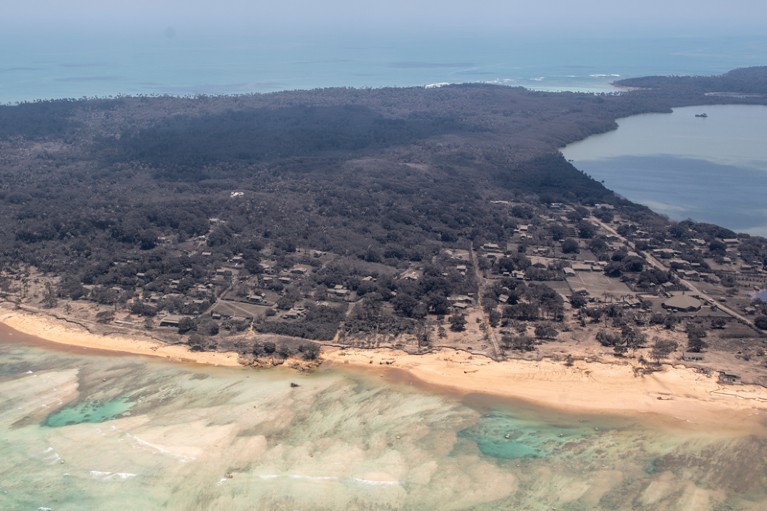
Much of Nomuka island in Tonga was covered in volcanic ash after the January 2022 eruption of Hunga Tonga–Hunga Ha’apai.Credit: New Zealand Defense Force via Getty
The UN is a disparate collection of bodies that have a range of mandates, some more organized than others.
For example, the WMO and its member states have successfully developed and coordinated early-warning systems for hydrometeorological hazards such as tropical cyclones, floods, heatwaves and thunderstorms, as well as systems to share relevant observations and associated forecasts between countries4.
Tsunami warnings are coordinated by the Intergovernmental Oceanographic Commission of the UN cultural organization UNESCO, together with the WMO. The UN Office for Outer Space Affairs promotes efforts to address the threat posed by near-Earth objects, working with the International Asteroid Warning Network, which was established in 2013. No UN organization coordinates volcanic warnings, however5 — with the exception of aviation advice on volcanic ash, for which the International Civil Aviation Organization takes the lead. Currently, only about 35% of Earth’s historically active volcanoes are continuously monitored6. Similarly, there is little coordination of warning systems for landslides, earthquakes or severe geomagnetic storms — all of which pose catastrophic risks7 — or for emerging risks, such as wildfire-generated thunderstorms8.
This organizational patchwork, combined with differences between countries and regions, hinders the smooth running of early-warning systems across the world. Plugging the gaps will rely on the involvement of the scientific community, as well as people at all organizational levels, from the UN to local communities.
Bring down barriers across borders
To reach people efficiently, early-warning systems should be consistent, highly accessible and as easy to act on as possible. This is often not the case.
Early warnings have typically stemmed from discipline-specific initiatives. Even though seismically generated tsunamis and tropical cyclones might trigger similar coastal inundations, warnings to affected populations are often delivered through various terminologies or alert codes, agencies and formats. All can have different lead times (which is often inevitable when dealing with distinct hazards) and the availability of underlying observations can vary. Resourcing of the overall warning network often differs, as do the working conditions for staff (such as whether they are paid to work out of hours, receive training on media communication or have secure employment).
Similarly, when warning systems for the same hazard have developed in different national or local systems, cross-border discrepancies can be confusing. For example, a category 4 severe tropical cyclone (one measured as having 10-minute-average winds of 86–107 knots, or 160–204 kilometres per hour) in Samoa would, in neighbouring American Samoa, probably be described as a category 3 hurricane with one-minute-average winds of 96–112 knots, or 178–207 km h–1 (see ‘Language barrier’). Furthermore, the warnings would be presented in different formats.
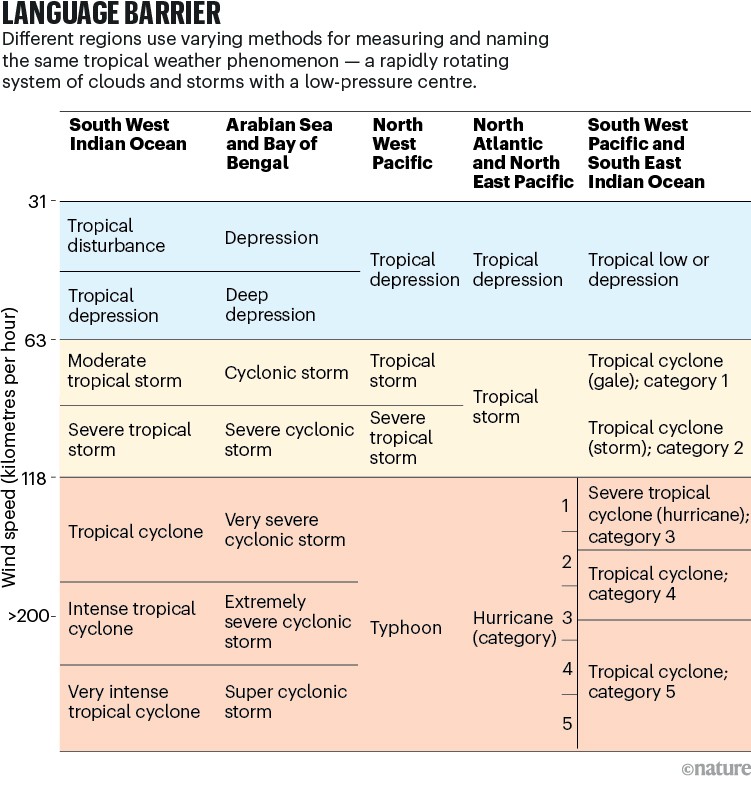
Competitive behaviour can also occur between individuals, agencies or disciplines, which interferes with the creation of accurate and seamless warning systems and hinders overall investment in the early-warning sector.
Another difficulty in establishing multi-hazard early-warning systems arises from the widely differing risks posed by various hazards. Warning systems tend to be more developed for frequently observed hazards such as heavy rains. By contrast, those for less-frequent but potentially catastrophic hazards9 are immature — yet it is absolutely necessary to include them. Before the 2022 Hunga Tonga–Hunga Ha’apai eruption, there was no instrumental monitoring at the volcano. With no understanding of what was happening beneath the volcano’s surface, the Tongan authorities and public were forced into a reactive mode, responding to what they could see and hear of the eruption rather than having the information to stay ahead of events. Similarly, academics are still debating the likely catastrophic impact of an intense solar storm, such as the Carrington Event10 in 1859. However, there is no doubt that a globally coherent, rapid warning and response would be necessary to help manage such an event.
Integrate inclusive information flows
Another crucial aspect is that warnings should reach everyone. Systems are typically set up from the top down — data are analysed, forecasts made and notices of upcoming events relayed to populations. But they must also work from the bottom up, so that warnings reach all members of a community in an effective way. What is generally assessed is whether the warnings exist at all3 — instead, the focus should be on the lives and livelihoods they protect.
Warnings should be tailored to the needs of all members of a community, in particular those who are marginalized or otherwise vulnerable, because these people are already at higher risk from natural hazards. An intersectional approach is needed: situations must be considered taking into account an individual’s characteristics, including gender, sexuality, age, race, ethnicity and disability, in combination.
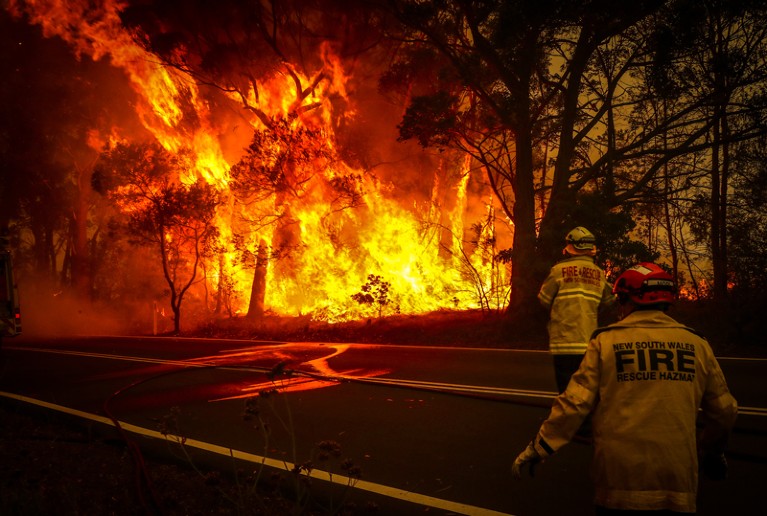
A wildfire on the outskirts of Bilpin near Sydney, Australia, in December 2019.Credit: David Gray/Getty
Inclusivity requires focusing on the integration of various information flows. This involves asking what people and groups need to receive warnings and take action efficiently, and developing successful policy and action through co-creation, co-production and co-implementation. There have been many instances in which warnings have not translated to action on the ground. An infamous example is the 1970 Bhola Tropical Cyclone in what is now Bangladesh, in which more than 300,000 lives were lost11. Another is the eruption of Mount Semeru in December 2021 in Indonesia, when warnings did not reach the population. And the 2023 wildfires in Lahaina on Maui, Hawaii, devastated the city, killing 99 people and generating intense discussion about the effectiveness of the current warning system in a warming world. To be efficient, systems should integrate initiatives driven by the UN and individual countries with community-led approaches (see ‘Come together’).
In areas of unrest, or where the government is not trusted, it is crucial to strengthen local warning systems by supporting the institutional relationships needed to generate warnings, and to build in mechanisms to minimize disruptions from insecurity, conflict and violence. For example, a project in Honduras from 2013 to 2022 pursued four cross-cutting strategies in an environment of informal settlements and gang violence. These strategies involved identifying and empowering key local systems actors; supporting and leveraging local assets; building cooperative systems of governance; and engaging with dynamic local systems12.
Concerted roles and responsibilities
We urge individuals and organizations to commit to a joined-up approach. This includes academics and scholarly institutions, operational staff and agencies, community workers working with the civil-society sector, staff at governmental and international organizations and individuals being good global citizens. We set out four priorities.
Work across silos. A multi-hazard, interdisciplinary and highly cooperative approach to warning systems should become a priority in each field. Early-warning systems must be adapted to include less-visible hazards, such as rare geohazard events, and local and national systems should be updated to prioritize international interoperability. Scientists working on all forms of risks and disasters need to communicate with each other. This can be done through centres that foster collaborations and collective efforts, including conferences. An example is the University College London Warning Research Centre, created in 2020 (C.J.F. is director and A.C.T. is an affiliate of the centre).
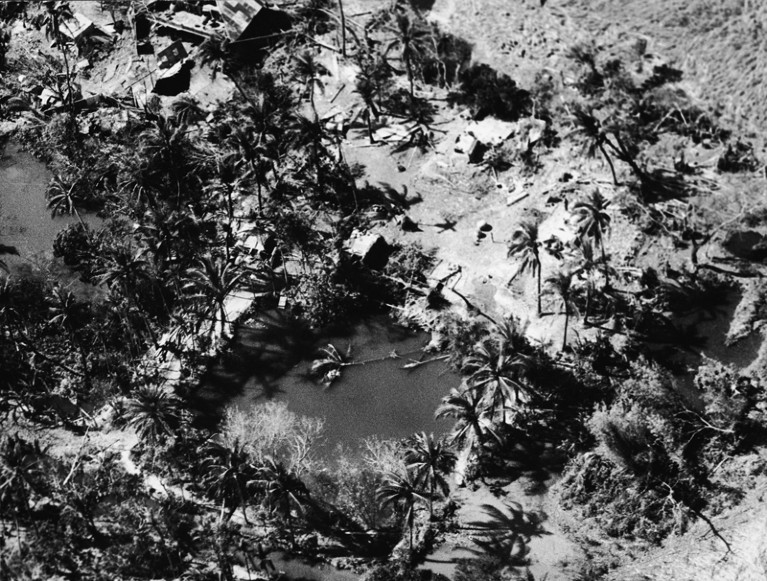
The island of Bhola, in what is now Bangladesh, was hit by a tropical cyclone in 1970 with enormous loss of life.Credit: Mondadori/Getty
Create inclusive warnings. Data gathering and warning systems must be truly inclusive, meaning that they are co-created or led by the communities that most need them. Partnerships between high- and low-income countries need to be set up in a way that recognizes the expertise of each member of the collaboration — high-income countries having for too long extracted knowledge from low-income countries. Protocols must be developed on how international scientists should work to support warnings and crisis response. A good example of such guidelines are those from the International Association of Volcanology and Chemistry of the Earth’s Interior, which advise the professional community about appropriate behaviour when managing an emerging or ongoing volcanic crisis13.
Collaborate across borders. No country can afford to work in isolation. Monitoring networks and global support arrangements are needed. One example of this change of thinking is the Systematic Observations Financing Facility, a global effort to improve meteorological observation networks, which builds on long-standing agreements negotiated by the WMO for the free and open exchange of crucial operational data.
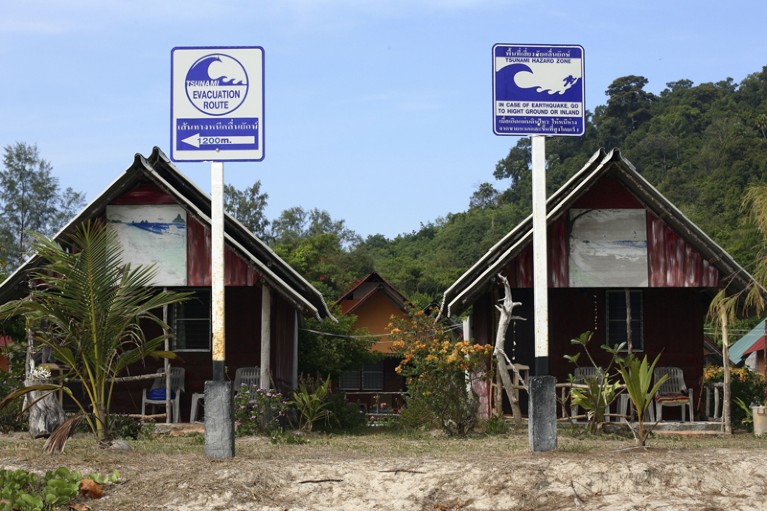
Tsunami warning signs and advice for evacuation in Thailand.Credit: Dirk Enters/imageBROKER/Shutterstock
Invest in warnings. Without directed effort and investment in monitoring facilities and trained staff through sustained resources, many nations lack the ability to generate warnings at all. Because resources and research are highly asymmetric across the world, it is important to prioritize technological transfers, such as through the WMO Severe Weather Forecasting Programme, which provides support for warnings in key areas around the globe.
Over the past century, early-warning systems have substantially reduced the repercussions of natural hazards by averting loss of life, disruptions to livelihoods, damage to ecosystems and the economic cost of disasters. Progress has been impressive, but has often been driven by dedicated individuals working with each other, with communities on the ground and with UN-backed organizations. Much more is needed. The technology to forecast most hazards and alert populations exists. It is now up to people at all organizational levels — including the scientific community — to engage in a bottom-up and top-down process that has feedbacks and loops. Risks are accelerating and warning systems have lagged behind. A change in attitude is urgently needed.

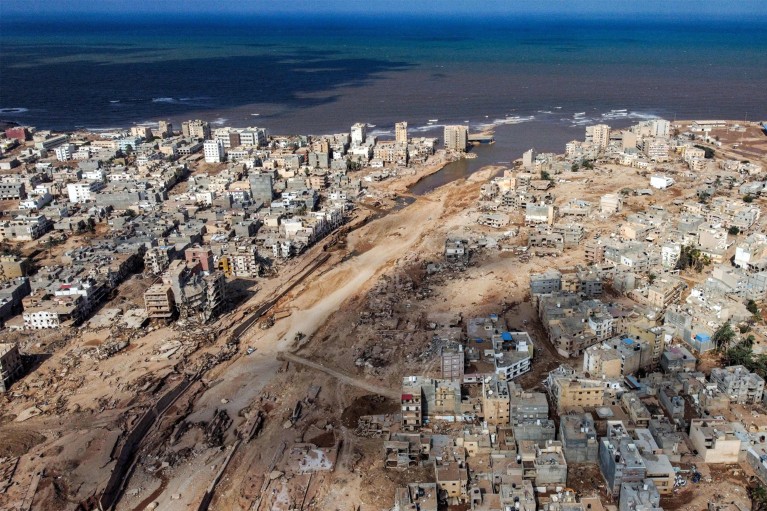
 With the arrival of El Niño, prepare for stronger marine heatwaves
With the arrival of El Niño, prepare for stronger marine heatwaves
 Flash floods: why are more of them devastating the world’s driest regions?
Flash floods: why are more of them devastating the world’s driest regions?
 How to reduce Africa’s undue exposure to climate risks
How to reduce Africa’s undue exposure to climate risks
 A new model for public health in Africa can become a reality
A new model for public health in Africa can become a reality
 Meet the scientists planning for disasters
Meet the scientists planning for disasters





